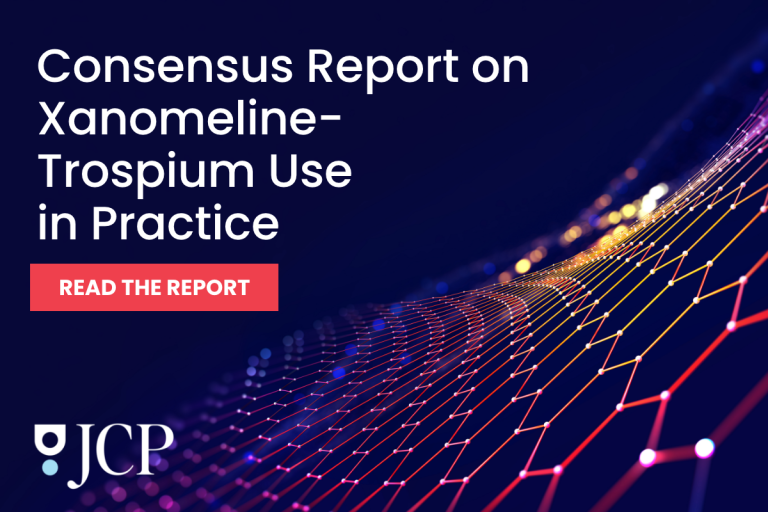Editor note: This spring, representatives of Psychiatrist.com attended two of the industry’s largest annual conferences. Today we present a quick recap of a handful of presentations from those events. Today’s dispatch explores a trio of studies that offer insight into emerging approaches in schizophrenia treatment.
SCOTTSDALE, Ariz – As we all know by now, the U.S. Food and Drug Administration (FDA) signed off on a novel schizophrenia treatment back in September 2024: the combination of xanomeline and trospium chloride.
This new agent has quickly emerged as one of the most promising alternatives for adult schizophrenia treatment. It’s a gamechanger for those who need adjustments because of safety, tolerability, or efficacy concerns.
But the rollout of any new therapy – especially one with such a novel pharmacological profile – raises some pressing questions.
- What’s the best way to move patients onto these new treatments?
- And what about dosing schedules?
- Or potential food interactions?
- And how does it perform over the long term especially with regard to potential movement-related side effects?
Bristol Myers Squibb sponsored several studies at the American Society of Clinical Psychopharmacology (ASCP) annual meeting that offer some compelling answers to these (and other) questions.
Switching from Atypical Antipsychotics
The first study looks at a real-world, open-label trial that researchers designed to evaluate strategies for cross-titrating patients from standard oral atypical antipsychotics to xanomeline/trospium.
The EMERGENT trials that led to the drug’s approval didn’t include patients already on antipsychotic medication, which left clinicians staring at a knowledge gap.
The eight-week trial enrolled 100 adults with schizophrenia who were psychiatrically stable. All of the participants had been taking atypical antipsychotics, such as risperidone, aripiprazole, or olanzapine. The research team then randomly assigned the participants into one of two groups:
- Arm 1: Slow transition, with a four-week taper of their existing antipsychotic at a rate of about 25% every week.
- Arm 2: Accelerated transition, using a two-week taper at 50% per week.
Every participant began with a low dose of xanomeline/trospium (50/20 mg twice daily), before researchers moved them to a maintenance dose of 100/20 mg or 125/30 mg BID based on clinical response and tolerability.
The study’s primary endpoint was all-cause discontinuation, with secondary outcomes including efficacy and safety measures such as adverse events (AEs) and vital sign monitoring.
This study represents the first effort to generate real-world, evidence-based guidance on cross-titration to xanomeline/trospium. The findings, once available, could steer clinical decision-making for the foreseeable future.
The Food Factor: Dosing Flexibility
The second poster focused on food interactions. Originally, the EMERGENT program required fasting doses because of the lower trospium bioavailability with food. But can patients eventually take xanomeline/trospium with meals?
A phase 4, two-cohort trial took a closer look at this. In the first cohort, participants received a four-week titration while fasting, followed by four weeks on a stable dose taken within 30 minutes of a meal.
The results? During the fasting phase, 62% of the participants reported at least one treatment-emergent adverse event (TEAE), compared to just 38% during the food phase. Common side effects, such as nausea, vomiting, and dyspepsia, dropped off significantly when participants took it with food. The researchers recorded no serious adverse events, and only one participant left the trial, and that was because of an unrelated liver abnormality.
These findings suggest that after the initial titration, most patients could take xanomeline/trospium with food without worrying about side effects. This could do wonders for treatment adherence.
New Long-Term Safety Data: Low Risk of Movement Side Effects
But perhaps the most significant finding came from the third poster. It presents the results of a pooled analysis of the long-term EMERGENT-4 and EMERGENT-5 trials, which explored the drug’s safety profile, particularly regarding extrapyramidal symptoms (EPS).
These 52-week, open-label trials looked at adults with either acute or stable schizophrenia on xanomeline/trospium, titrated up to 125/30 mg BID. The subsequentresults showed:
- EPS-related TEAEs were rare. Akathisia occurred in just 1% of participants, while tardive dyskinesia and dyskinesia cropped up in only 0.3% and 0.1%, respectively.
- No participants dropped out because of EPS.
- Movement disorder scale scores (Simpson-Angus Scale, Barnes Akathisia Rating Scale, and AIMS) all remained stable or even improved slightly.
These results shore up the argument that this drug combination is a safer long-term alternative to dopamine-targeting antipsychotics.
Efficacy Observations
Even though none of these studies pursued efficacy as a primary endpoint, two of them hinted at therapeutic benefits. In the food trial, Positive and Negative Syndrome Scale (PANSS) scores improved by 3 points during the fasting phase and 5.4 points during the food phase. Clinical Global Impressions–Severity (CGI-S) scores also dipped.
These findings line up with earlier EMERGENT trials and reinforce the combination’s potential to provide symptom relief for patients that need help that existing medications simply can’t provide.
Practical Implications
These three studies shed fresh light on how to effectively and safely integrate xanomeline/trospium into real-world treatment plans:
- Switching guidance: Clinicians now have practical strategies to transition patients from other antipsychotics, tailored to the individual.
- Dosing flexibility: After a brief fasting period, it looks like patients might be able to take doses with food, improving convenience and encouraging adherence.
- Long-term safety: Unlike traditional dopamine-blocking agents, xanomeline/trospium poses minimal EPS risk even after a full year of use.
As psychiatry continues to explore mechanisms beyond dopamine, xanomeline/trospium represents a sea change in schizophrenia treatment. These ASCP 2025 posters help close critical implementation gaps – offering clinicians valuable tools for personalized, safer, and more practical care.
Further Reading
Can Cariprazine Offer a Less Sleepy Schizophrenia Treatment?
Children of Parents with Schizophrenia Face More Mental Health Issues



